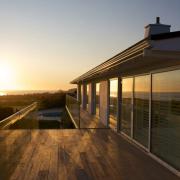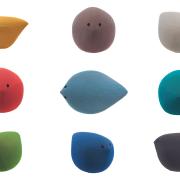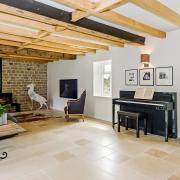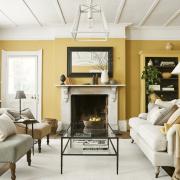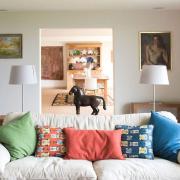Nothing sets the mood of a room more than the way it is lit. Interior designer Charlotte Starling shows you how clever lighting can create a warm and welcoming ambience
With the nights drawing in now is a good time to think about lighting in your home. Lighting is all too often an afterthought in a room, but getting the lighting right is key, and should be planned from the early stages of decorating.
Enter any lighting shop and you are faced with a mind-boggling array of table lamps, floor lamps, recessed spots and pendants. Once you’ve worked out how they distribute light, however, it becomes much easier to know what to choose. The general rule of thumb is that in addition to natural light, a room needs a combination of three lighting types: general background or ambient lighting, task lighting for working or reading, and feature lighting which includes stunning, decorative lights and those that highlight architectural features in the room. Feature lighting is about three times as bright as ambient lighting. A large pendant light or chandelier hung centrally from a ceiling can be an eye-catching addition to a room. I love to put a completely oversized pendant or elaborate chandelier into a small room like a hall or cloakroom, creating an Alice in Wonderland, slightly quirky effect, which distracts from the small space and leads the eye upwards. Be aware though, that ceiling-hung lights will cast flat light and harsh shadows, which is why just one pendant in a room is not enough on its own. You need to create layers of light with other sources round the room. What you are after is soft pools of light creating highlights and lowlights.
Wall lights throw soft light around the perimeter of a room, washing the walls with beautiful tones and are perfect for ambient lighting. Floor-standing lights and standard lamps are great for small spaces and help by bouncing light around at different levels. Their verticals are useful to add height and interest in a room full of horizontal furniture.
Down-lighters are ideal for kitchen or bathrooms but can feel gloomy if not boosted by other light sources. I avoid halogen lights in bedrooms and sitting rooms as they are so harsh, but they are useful in bathrooms or rooms that need a lot of light. Make sure that you also have side lighting in a bathroom as spot lights alone cast shadows, which is not good news if you are trying to do your make-up!
Table lamps radiate light inwards and add a sense of cosiness. By choosing decorative shades for these, you can enliven a room and help break it up visually. Use lampshades to add pattern and colour, have fun with them, for example, you can change them with the seasons if you want. A clever trick I use is to choose shades lined in a soft champagne or gold colour, as shades lined in white cast a very cold light. This creates a golden light which is particularly lovely at night – there is nothing worse (or less flattering) than sitting in a starkly-lit room in the evening.
And finally, dimmer switches are a must in every room, as rather than having a single level of illumination they allow you to create a whole range of tones. When the lighting is right in a room, it creates a feeling of comfort and relaxation, enticing you in. Get it wrong and you’ll find no one will want to linger.
***
Colours of the Compass
Which colours enhance the natural light in a room? It depends on which way your room faces, says Sarah Cole of Farrow & Ball.
Natural and artificial light will affect how a colour looks in a space and should always be considered when choosing colour for a space. To begin with, think about the direction of light in the room. For example, north facing rooms are notoriously difficult to decorate as they are naturally darker. In these spaces use strong colour and embrace what nature has given - Brinjal, Mole’s Breath and Charleston Gray can all be used to create drama and intimacy.
South facing rooms are much easier to decorate as the quality of light means you can use both cool and warm colours and both will look good. By choosing paler tones you can really maximise the feeling of light, try Pavilion Blue, Dimpse or Borrowed Light.
The light in east facing rooms can appear a little blue so it’s best to use watery blues and greens to maximise this effect. The colour in the room will change dramatically through the day as the sun moves, so by using a darker colour like Chappell Green on woodwork and a lighter colour like Pale Powder on the walls you can create a feeling of light and space.
West facing rooms have a beautiful warm light in the evenings; choose whites like Slipper Satin or even Middleton Pink to embrace this glow without losing too much light.
A good tip to try before you begin any decorating project is to paint a sample pot of your chosen colour onto card so you can move it around the room and see how the colour changes in different places and at different times of the day. Artificial light is not the only light that will affect a colour, the light and shade through windows and doors will also affect how it appears so painting a sample will really help you to see how the light will affect the colour before committing to painting the whole room. For more decorating tips visit farrow-ball.com.
--------------------------------------------------
Read on








